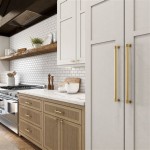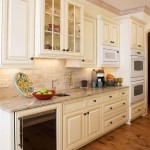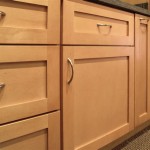How To Pick Out Kitchen Cabinets
Choosing kitchen cabinets is a significant decision in any kitchen remodel or new build. Cabinets contribute heavily to the overall aesthetic, functionality, and budget of the kitchen. Careful consideration of various factors will ensure a satisfactory outcome that meets both practical needs and design preferences.
1. Determine Your Budget
Establishing a realistic budget is the crucial first step. Cabinetry represents a substantial portion of kitchen renovation costs. Defining a budget range helps narrow down material choices and cabinet styles, preventing overspending and ensuring the project stays financially manageable.
Cabinets are typically priced by the linear foot or by the individual unit. Researching average costs for different cabinet types in your area can provide a helpful benchmark. Remember to factor in additional expenses like installation, hardware, and any necessary modifications.
2. Choose Your Cabinet Style
Kitchen cabinet styles range from traditional to contemporary, impacting the overall kitchen aesthetic. Understanding the different styles allows homeowners to select cabinets that complement their design vision.
Popular styles include Shaker, characterized by simple recessed panel doors; Flat-panel or slab, featuring sleek, minimalist lines; and Raised-panel, offering a more traditional and ornate look. Researching various styles through online resources and visiting showrooms can help visualize how different cabinet styles will look in a given kitchen space.
3. Select Cabinet Materials
Cabinet materials significantly influence durability, maintenance, and cost. The primary choices are solid wood, plywood, particleboard, and medium-density fiberboard (MDF).
Solid wood offers superior durability and a classic aesthetic but comes at a higher price point. Plywood is a robust and cost-effective alternative, while particleboard and MDF are budget-friendly options but may be less resistant to moisture damage. Considering the kitchen's environment and the desired longevity of the cabinets will guide the material selection process.
4. Consider Construction Techniques
Cabinet construction significantly impacts the cabinet's strength, durability, and longevity. Key construction features to examine include the type of joinery used, the thickness of the cabinet box material, and the drawer construction.
Dovetail joinery is a strong and traditional method for joining drawer components. Look for thicker box construction for added stability, particularly for wall cabinets. Full-extension drawers provide better access to stored items compared to partial-extension drawers. Understanding these construction details ensures the selection of well-built, long-lasting cabinetry.
5. Plan Your Layout and Functionality
A well-planned layout optimizes kitchen workflow and maximizes storage space. Consider the kitchen's work triangle – the path between the sink, stove, and refrigerator – and plan cabinet placement to facilitate efficient movement.
Evaluate storage needs and explore specialized cabinet features like pull-out drawers, spice racks, and corner units to maximize storage capacity. Incorporating specialized storage solutions ensures all kitchen essentials have a designated place, promoting organization and efficient use of space.
6. Choose Hardware and Finishes
Hardware and finishes are the finishing touches that personalize the kitchen and enhance the overall aesthetic. Hardware choices, including knobs, pulls, and hinges, should complement the chosen cabinet style.
Finishes significantly impact the kitchen's look and feel. Options range from stained wood finishes that showcase the natural wood grain to painted finishes in various colors. Consider existing kitchen elements, such as countertops and appliances, when selecting hardware and finishes to create a cohesive and visually appealing space.
7. Research and Compare Vendors
Once the design and functional requirements are established, researching and comparing different cabinet vendors is essential. Obtain quotes from multiple suppliers to compare pricing and lead times.
Read online reviews and seek recommendations from trusted sources to gauge the quality of products and customer service. Visiting showrooms allows for firsthand inspection of cabinet quality and finishes. Thorough research and comparison shopping helps ensure the selection of a reputable vendor offering high-quality cabinets at a competitive price.

How To Choose A Kitchen Cabinet Color According Designers

How To Pick The Right Cabinets For Your Kitchen

How Important It Is To Choose The Best Kitchen Cabinet Find Home Pros

How To Choose The Best Kitchen Cabinet Design In Singapore

How To Choose Kitchen Cabinets Cabinet Doors N More

How To Choose The Right Kitchen Cabinets For Your Remodel

8 Helpful Tips For Choosing Kitchen Cabinet Paint Colors

How To Design And Pick The Right Cabinet For Your Kitchen Edgewood Cabinetry

How To Choose Kitchen Cabinet Color Awa Cabinets

What You Need To Know Before Choosing Kitchen Cabinets Lesso Blog








